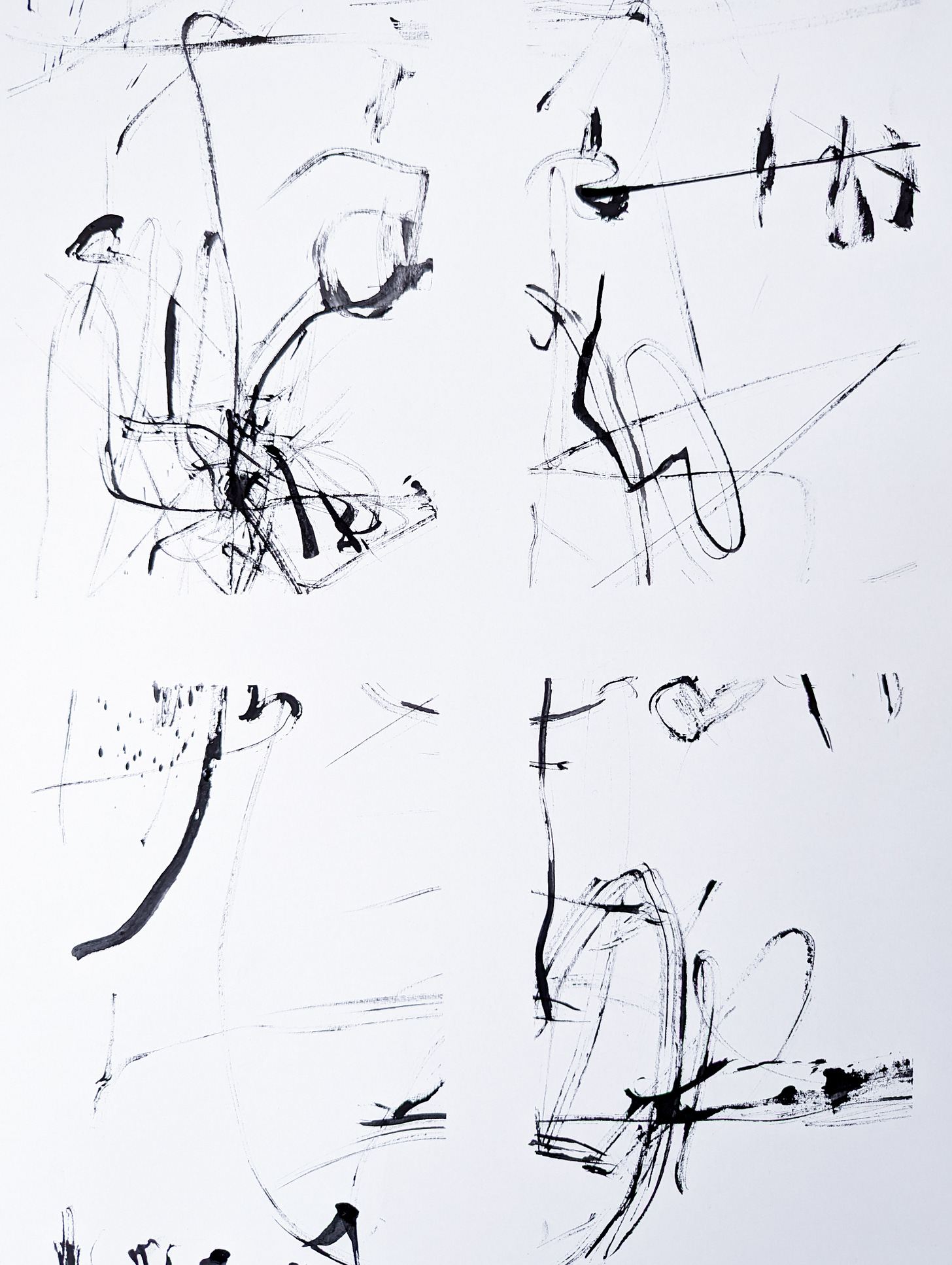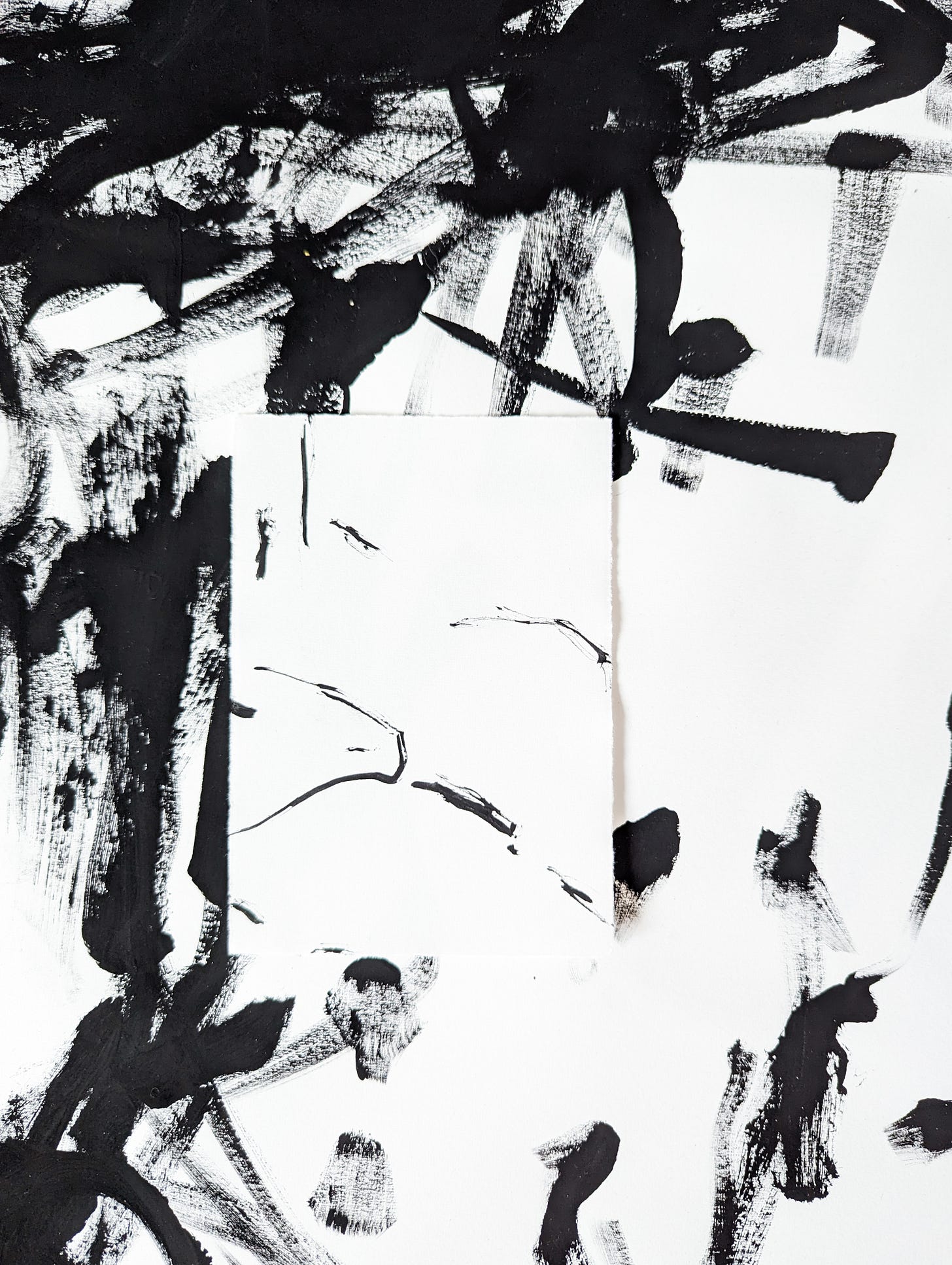Week 2 prompt: Loose & Gestural Marks (#PYH2024)
In February, with Paint Yourself Happy February, we are sharing creative prompts with you, inviting play into your art practice. This week's prompt: gestural marks. Read on for inspiring ideas to try!
The second week of Paint Yourself Happy February is about mark making, to be more precise: Loose & Gestural Marks. This prompt was introduced in Paint Yourself Happy February 2022.
We started this week with one of my favorite marks; expressive lines.
Marks
Marks can be anything from lines, scribbles, scratches, smudges, dots, dashes, patterns to textures. When your tool touches the surface and leaves a trace you have made a mark. Many different artists use a variety of mark making in their art.
A variety of marks in your work can add interest and it can help to move the viewer’s eye around your artwork. Marks can be the building blocks of your artwork.
I (Simone) personally use marks and their gestural qualities to express how I feel in response to my inner world and the world around me.
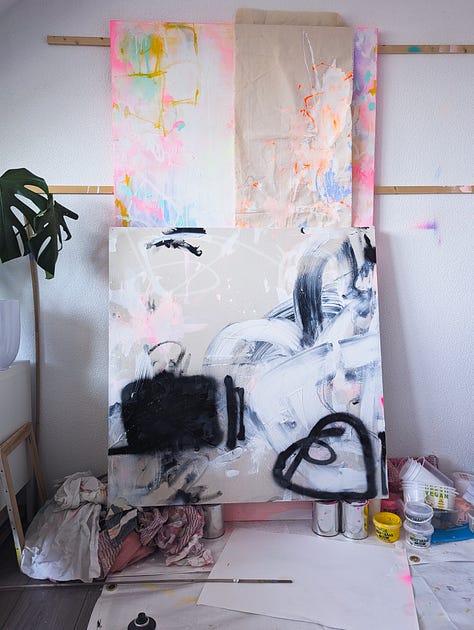


Marks can be loose and gestural, or very neat and controlled. They can be made with any material used on any surface: paint on canvas, watercolor on paper, ink, pastels, charcoal, or pencil on paper, scratches in thickly applied paint, but more experimental tools such as objects you found will get you great results too, for instance, twigs, feathers, leaves, flowers, elastic bands.
Mark making doesn’t always have to be loose or, as I sometimes call it, uncontrolled. Think about Yayoi Kusama who systematically makes marks.
Ways to make marks
There are many ways to use your tools to make marks, and we will dive into this a bit later.
These are some examples of different marks you can make:
Loose, gestural, uncontrolled & neat and controlled
Thick & thin
Wet & dry
Quick & slow
Dense & spacious
Balanced & unbalanced
Clean & Smudged
The prompt
We started this week with expressive lines.
Expressive lines are often curved, adding an organic, more dynamic character to your art. They’re often rounded and follow undetermined paths.
Grab your favorite mark-making tools, in one color. As you can see in pictures below I went for graphite and black acrylic paint. I used a little branch I found outside as my tool to make marks with the acrylic paint.
Pick your favorite surface in a size you like; canvas, paper, cardboard, etc.
Start making expressive lines that are loose and gestural.
Try the next tips for different results
Make lines that are the opposite of loose and gestural.
Hold your pencil, pastel, brush, etc by the tip. This gives less control, thus different marks.
Hold your pencil, pastel, brush, etc, with your non-dominant hand.
Try a tool or medium that is (quite) new to you.
Close your eyes when making your lines.
Pick a bigger surface to make lines on. How does it change your energy?
Change your position when making the lines.
Try other sorts of paper: newspaper, pages from old books, reuse paper you have already painted on, tracing paper, pattern paper, kraft paper, etc.
Questions to ask yourself
How do my lines feel? Calm, serene, angry, noisy, quiet, wild, etc?
Can I make lines that feel differently?
What is my energy when making different lines?
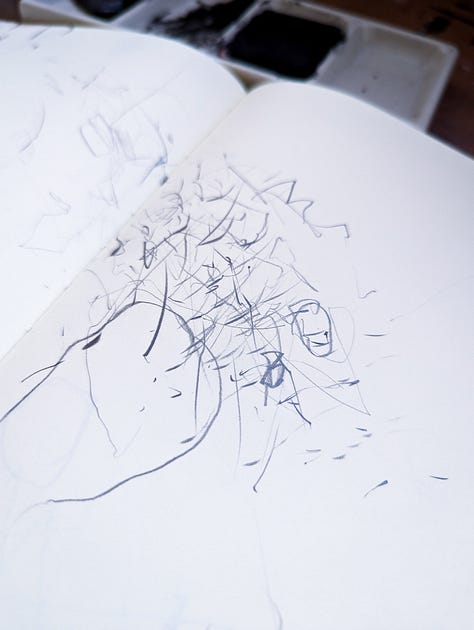
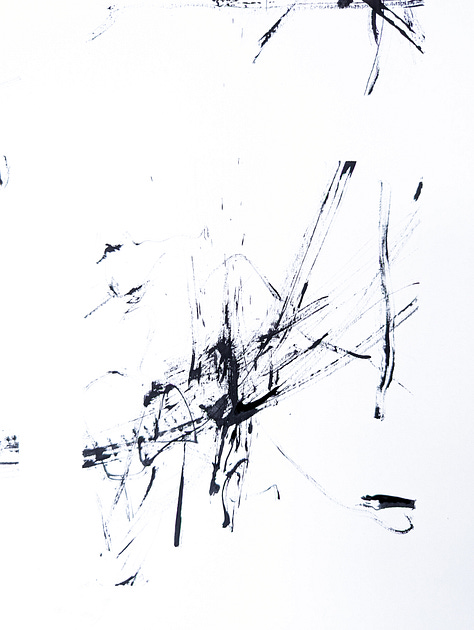

Some inspiration and ideas to explore
Lines are not the only marks, so when you’re done playing with lines, we have some other ideas to explore, to expand our mark-making; experimenting with different tools and materials, and different marks.
Gather different tools and mediums for marking marks. If you like, you can use more than one color for this exercise. But this exercise also works perfectly with just one color.
Divide your piece of paper (or whatever you’re using) into a few squares, rectangles or thumbnails. You can draw squares or rectangles, or you can cut them if you like. You decide how big they are.
In every square or rectangle you make different marks. Don’t overthink! See what comes naturally to you.

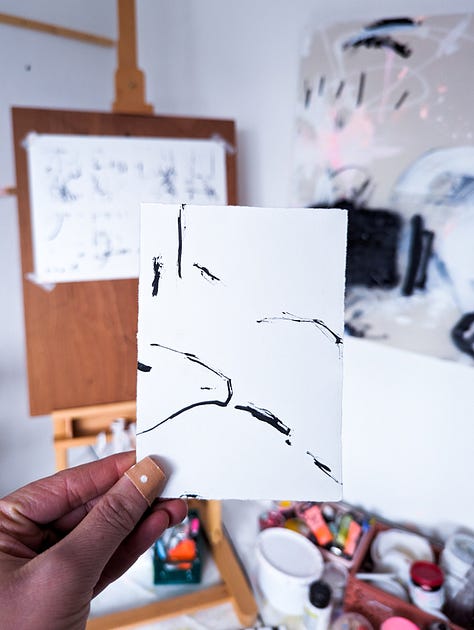

Try the next tips in the next days for different results:
Cut the squares or rectangles with marks out and see if you can put a few pieces together that look good together.
Combine your cutouts with another piece you made earlier (see picture below).
If you use paint or ink, make marks without the use of a paintbrush; fingers, cotton buds, sticks, fork, tooth picks, elastic bands, lids, etc.
Hold the tool you’re using by the tip. Less control, thus different marks.
Hold your tool, with your non-dominant hand.
Close your eyes when making marks.
Change your position when making marks.
Try other sorts of paper: newspaper, pages from old books, reuse paper you have already painted on, tracing paper, pattern paper, kraft paper, etc.
Questions to ask yourself
Which marks come naturally to you / do you enjoy making?
Which marks do you enjoy looking at?
How could you apply the things you have discovered in this first week to your own work?
Examples
Here is a little video of Stephanie playing with lines.
Remember to just play!
Before we let you get back to exploring, we wanted to remind you of the idea behind Paint Yourself Happy February.
Play!
Ideally, play a little most days.
We shared many inspirations, but the best ones are the ones you will find in your practice. If you don’t know where to start, start with one of the suggestions in this post. Start making art, keep an open mind and follow your ideas.
If you feel like trying something, even if it is silly, go for it. And share the silly things with us because we love trying new silly things!
Have fun creating!
Simone and Stephanie





